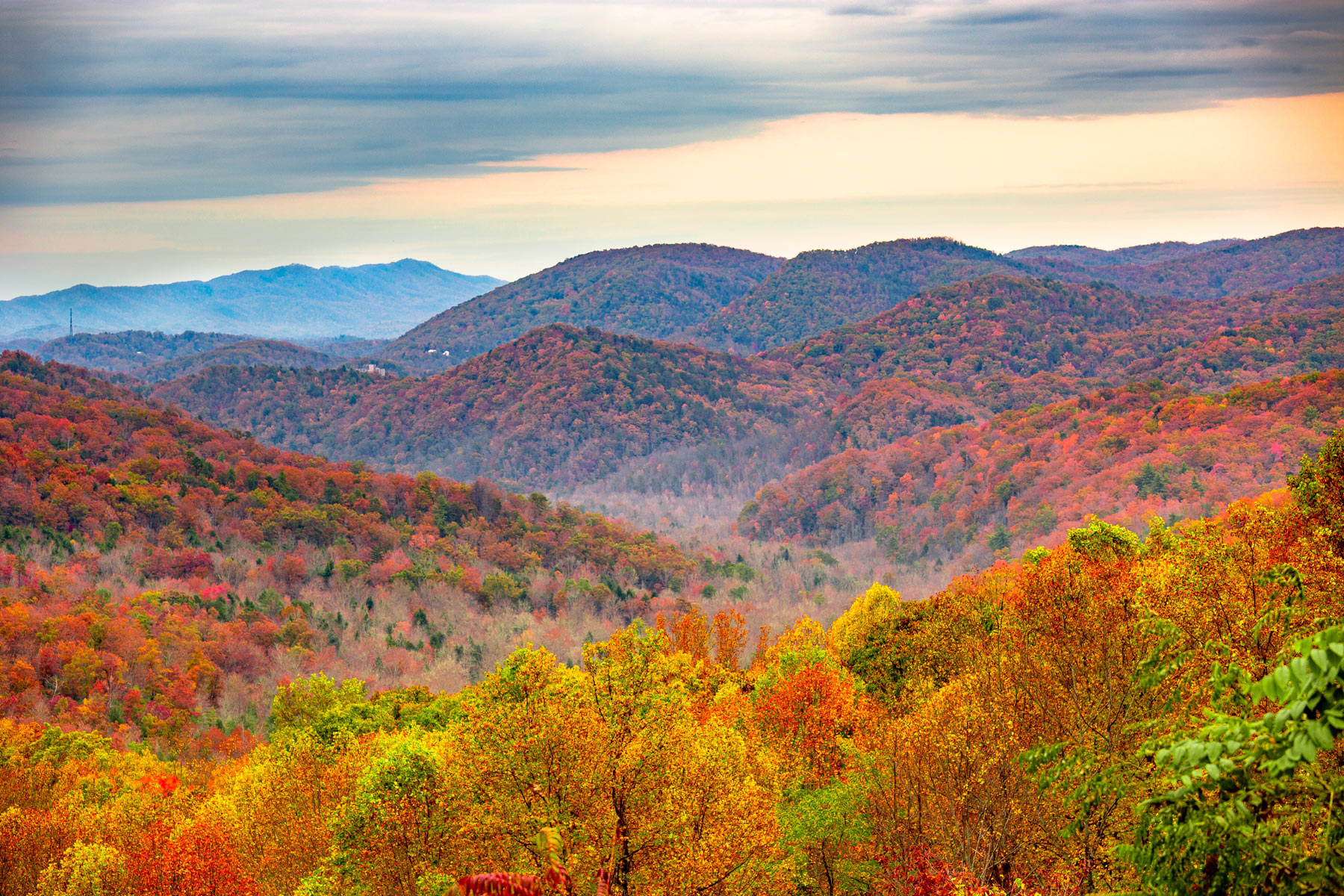
Great Smoky Mountains National Park is the is the most visited national park in the country and a true monument to the beauty of the Appalachians.
Established in the depths of the Great Depression by generous local communities, wealthy philanthropists like John D. Rockefeller Jr., and the U.S. government, this pristine area was spared from further logging and development and is now a premiere outdoor destination belonging to all Americans.
Nestled in the misty mountains of Tennessee and North Carolina, Great Smoky Mountains is easily one of the most beautiful national parks on the planet. If you don’t believe me, visit in the fall and you’ll see exactly what I’m talking about – more on that later!
If you’re wondering how crowded the park is considering it’s the most visited national park in the country – you might be surprised by the answer. While it certainly depends on where you go in the park and what time of year you visit, Great Smoky Mountains doesn’t see anywhere near the crowding that parks like Zion or Yosemite do these days.
To find out when, where, and why to go in this Appalachian wonderland – read on!
About My Travels to Great Smoky Mountains National Park
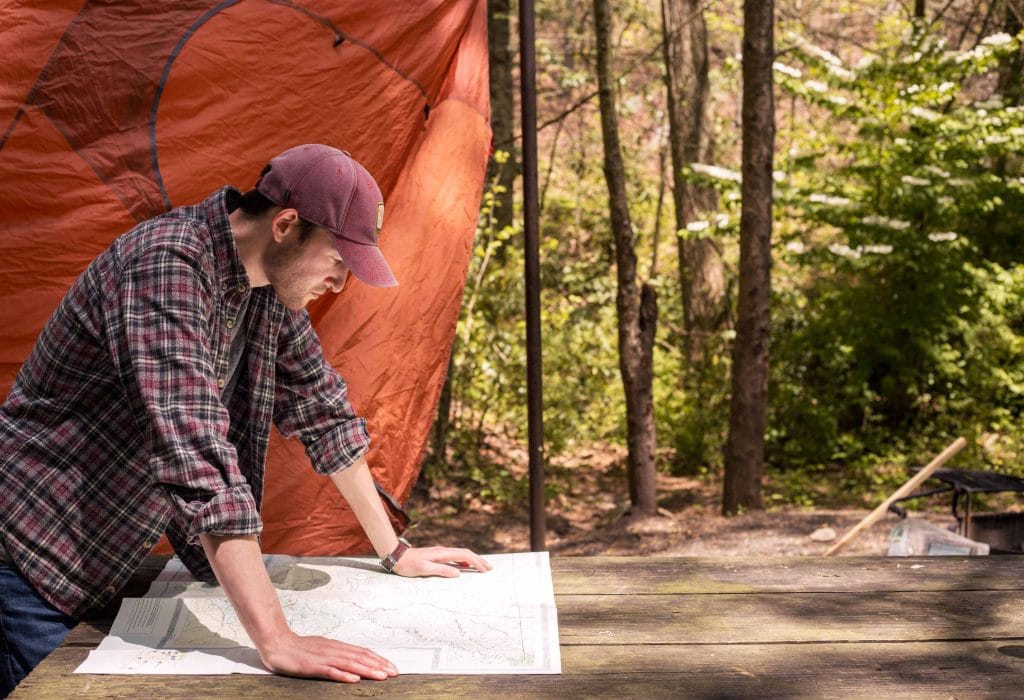
Making the Great Smoky Mountains Film
My brother Will and I first traveled to the Smokies with a friend back in 2015 to capture the park during peak fall color. Fall peaked late that year and we ended up going towards the end of October and staying into November.
The nights were cold and the morning frost was a bit unfriendly after a night spent in a tent, but the views and the memories are some I’ll keep forever.
The fall color here was absolutely spectacular, some of the best I’ve ever seen – and believe me when I say I’m somewhat of a fall color connoisseur. Wildlife can be seen in nearly every corner of the park, from river otters to elk to black bears, the Smokies really does have it all.
What’s Special About the Great Smoky Mountains
I’ve returned to Great Smoky Mountains National Park probably more times than I have to any other national park. Much of that has to do with proximity as I lived in Georgia for a long time, but it also speaks to the enduring beauty of the place that keeps me coming back year after year.
There’s something about the Great Smoky Mountains that feels old and familiar in the best of ways. Perhaps it’s the rustic frontier cabins that dot the landscapes, or the majestic old-growth forests laden with faded leaves from seasons past, or the creeks and rivers tumbling over worn stones throughout the forests and hills of the park.
Whatever it is, I think it imbues a charm in visitors that hearkens back to another time when forests and hills and creeks were all the entertainment one needed.
Great Smoky Mountains National Park Guide
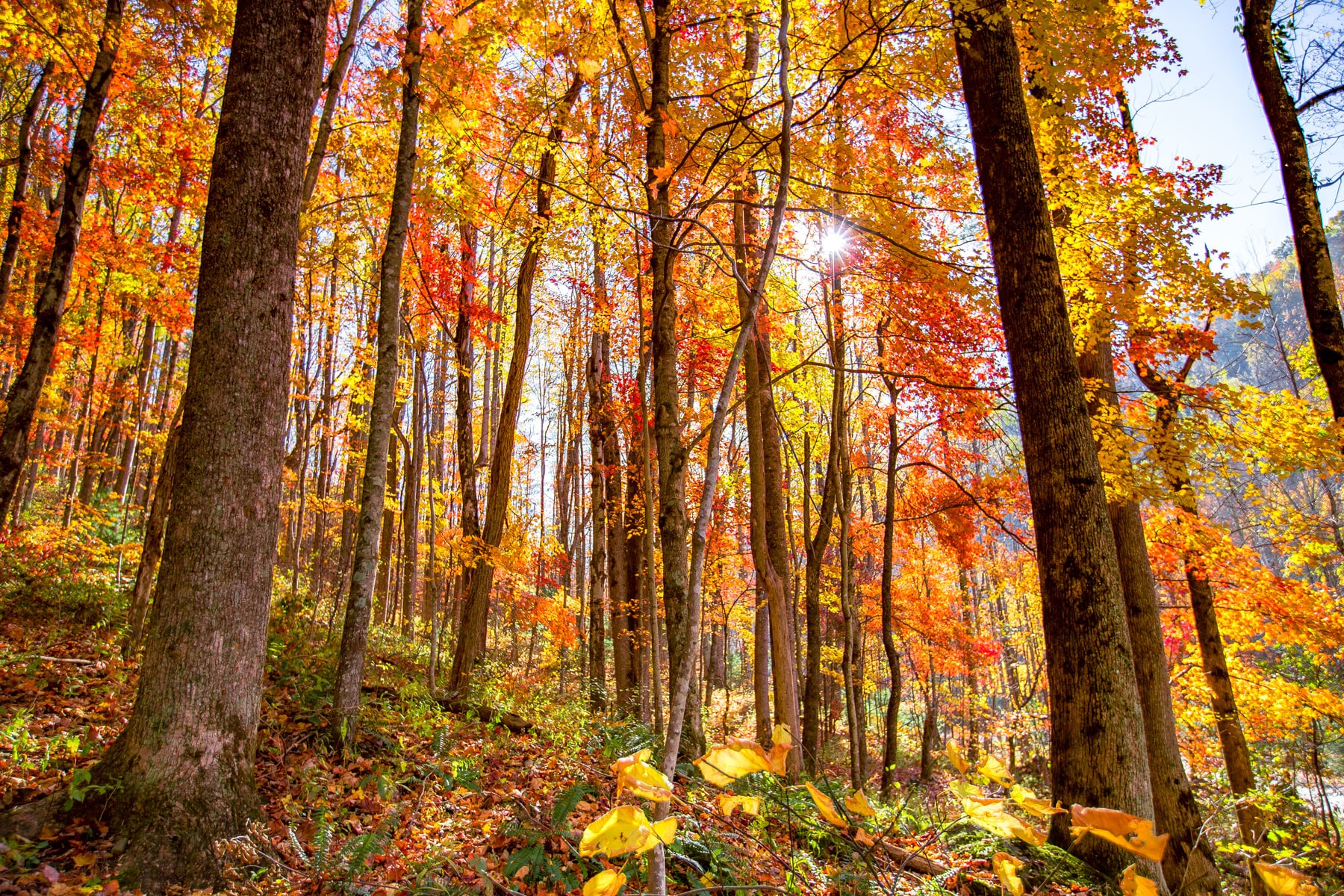
About Great Smoky Mountains
Nestled in the heart of the Southern Appalachian Mountains is a place where time seems to have stood still. Here are the last remains of the ancient forests that once dominated the Eastern United States.
In the words of President Franklin Roosevelt, “there are trees here that stood before our forefathers ever came to this continent; there are brooks that still run as clear as on the day the first pioneer cupped his hand and drank from them.”
These misty mountains are home to America’s most visited national park, a land of vast hardwood forests, clear mountain streams, frontier cabins, and iconic wildlife. This is Great Smoky Mountains National Park.
Things to Know Before You Visit
Entrance Fees: There are none!
Getting Around: Great Smoky Mountains is a very accessible park with roads taking visitors through much of the park. Most any vehicle will do throughout the park and prepare for some scenic driving! The park does get very busy in the Summer so be prepared for long lines of cars and so-called bear-jams.
Sunscreen: For many of us visiting national parks in the summer means lots of sun. Seriously, some of these parks can zap you if you don’t wear sunscreen. We happen to like this one because it works AND it’s not full of a bunch of chemicals.
Leave No Trace: We’re big fans of Leave No Trace, here at MTJP. Want to learn more? Read about the seven principals of Leave No Trace here.
Insect Repellent: You hope not to need it, but you want to have it. We typically bring an Eco-Friendly Insect Repellent with us just in case.
Dogs are not allowed on trails in most national parks due to their potentially disruptive presence with the natural ecosystem. The basic rule is they are allowed where cars can go so be sure to check the rules before bringing along your furry friend.
Details About Great Smoky Mountains National Park
Location: Eastern Tennessee & Western North Carolina
Established: June 15, 1934
Size: 522,419 acres
Visitors: 12,095,720 (2020)
Entrance Fees: None!
The History of Great Smoky Mountains National Park
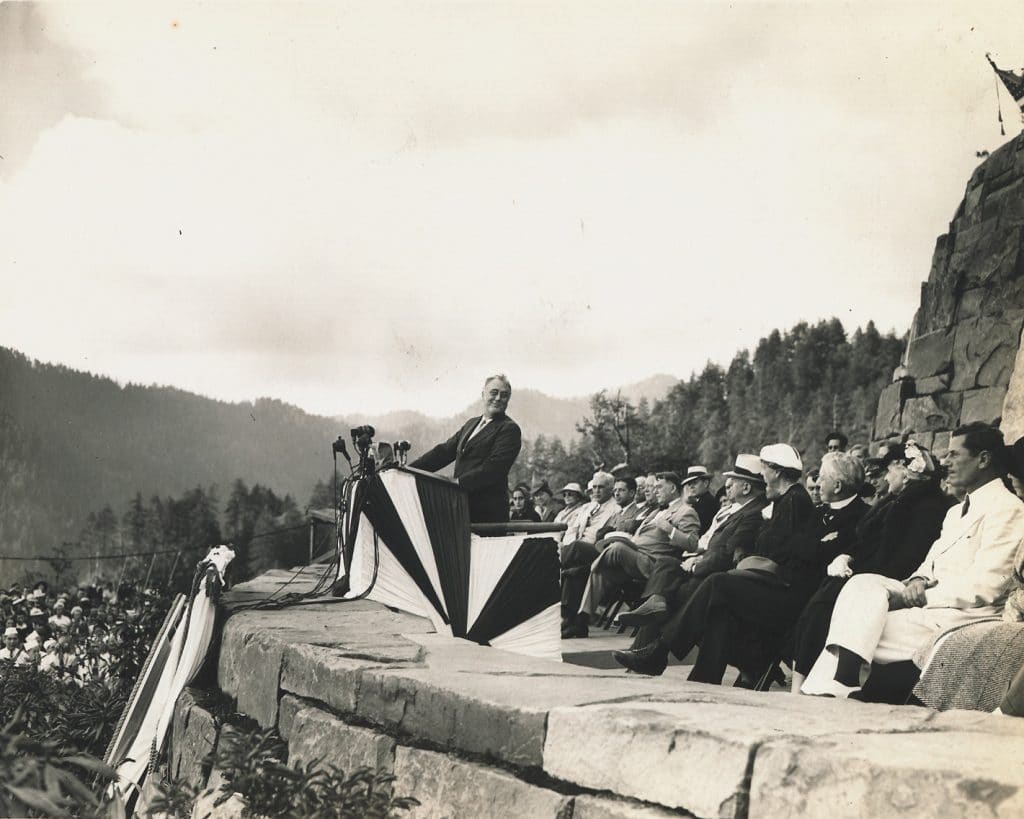
While I would love to tell you a story about Franklin Roosevelt championing the cause of Great Smoky Mountains National Park, which he certainly did, the credit for this park really belongs to the people of western North Carolina and eastern Tennessee who banded together to preserve this spectacular slice of Appalachia.
Oh, and one extremely generous man with a famous name and a penchant for conservation.
An Eastern Oasis
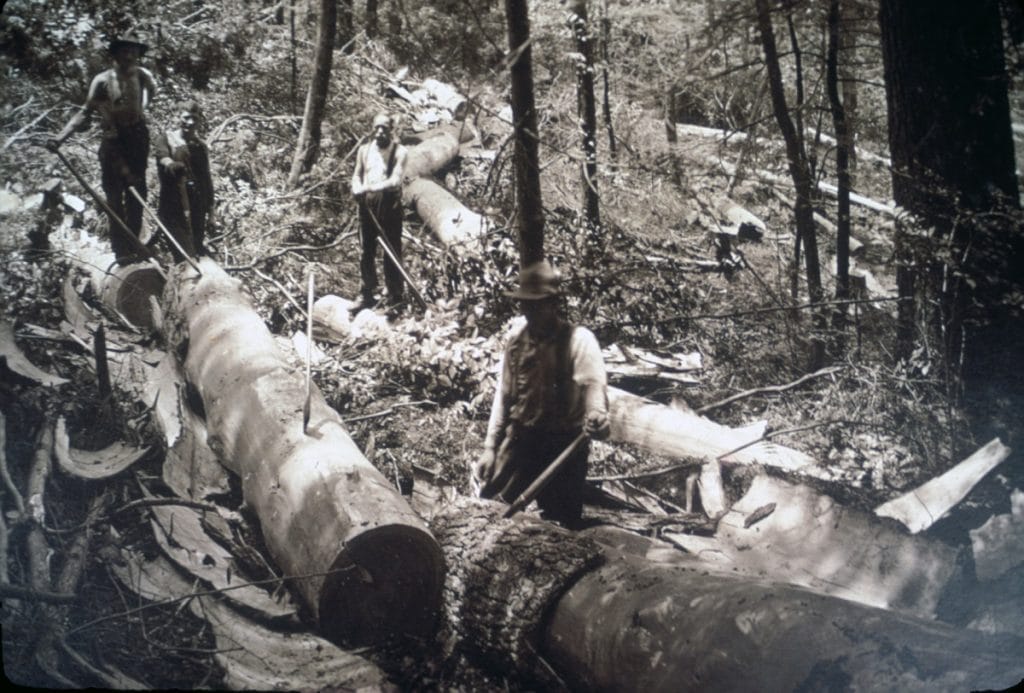
The widespread practice of clear-cutting (an extremely destructive type of logging) had decimated much of the eastern United States once-grand forests by the late 1800’s.
But in the rugged mountains of western North Carolina and eastern Tennessee there were still largely untouched swaths of forests, rivers, meadows, and creeks.
By the turn of the century locals began to realize the importance of preserving this rare and pristine landscape and started clamoring for the government to do something.
A Grassroots Park

By the 1920’s the National Park Service was itching for a national park in the eastern United States but didn’t have any money to do it. Congress went so far as to authorize the creation of a national park in the area in 1926, but didn’t provide any money or mechanism to acquire the lands needed to create the park. Whoops!
So the state legislatures of Tennessee and North Carolina each appropriated $2 million for the acquisition of land to create the park. Civic-minded citizens donated what they could and school kids even donated pennies. By 1928 $5 million had been raised for the park, but it still wasn’t enough to save the area.
John D. Rockefeller Jr.

Enter John D. Rockefeller Jr., the son of perhaps the richest man in history (Standard Oil magnate John D Rockefeller) and himself a fervent conservationist. Seeing the park’s creation within reach, Rockefeller Jr. swooped into action and promptly donated an additional $5 million, thereby ensuring the purchase of all the land needed for the park.
Rockefeller Jr. went on to donate massive sums of money throughout his life helping to establish numerous national parks like Grand Teton, Yosemite, Shenandoah, and many others.
Great Smoky Mountains National Park Map

Where is Great Smoky Mountains National Park?
Great Smoky Mountains National Park is nestled into the Appalachian Mountains of western North Carolina and Eastern Tennessee. The park is about an hour southeast of Knoxville, TN and an hour and a half west of Asheville, NC.
Getting to the Park – Directions & Location
Great Smoky Mountains National Park is conveniently located around the mountain tourist town of Gatlinburg, TN, which is just south of the larger tourist town of Pigeon Forge.
Closest Airport: TYS – McGhee Tyson Airport (Knoxville)
The fastest way to get to Great Smoky Mountains National Park depends on where you live as the park is quite drivable for large populations in the Eastern US. You can fly in to McGhee Tyson Airport (Knoxville) on most domestic airlines, from there you can rent a car and make your way into the park which is a little more than an hour away.
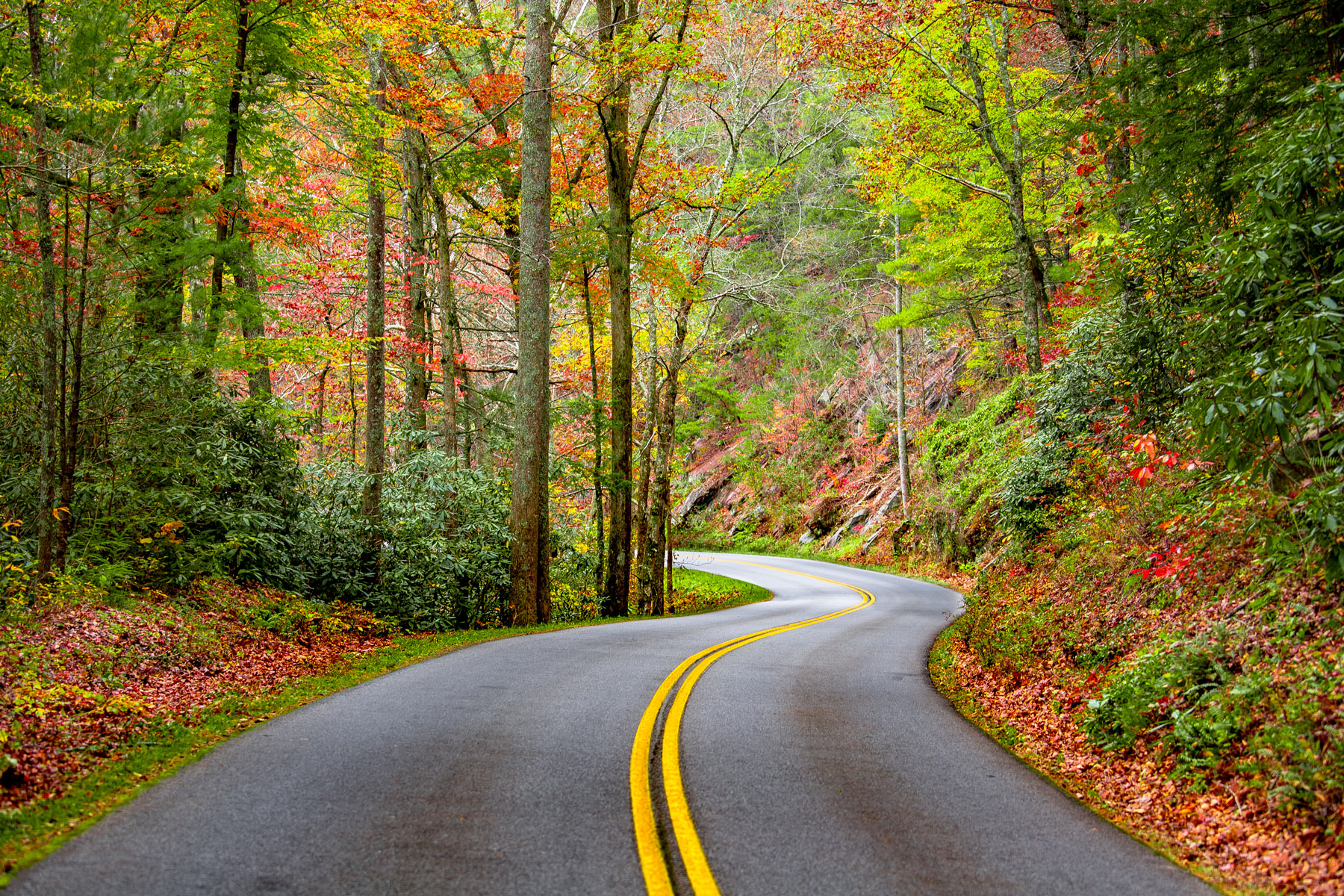
Navigating the Park
The most popular way to enter the park is from the bustling tourist town of Gatlinburg.From there the park spreads out before you to the south, east, and west. Heading west will take you along the scenic Little River all the way to Cades Cove.
East will take you to the Roaring Fork Motor Nature Trail, an assortment of historic cabins, waterfalls and hiking trails. South will take you through the heart of the park on highway 441. Southbound on 441 you’ll come upon Clingmans Dome, numerous scenic lookouts, and eventually the Oconaluftee area.
Popular Roads
US 441 is the main road and will take you to many of the destinations on your park map.
Little River Gorge Road is a scenic winding road where you’ll have a chance to spot black bears, river otters, and eventually end up at Cades Cove..
Cades Cove Loop Road is perhaps the most popular road in the park and provides visitors with opportunities to see historic cabins, rare wildlife, and misty mountain beauty.
Things to Keep in Mind
Great Smoky Mountains is the most visited national park in the country. This means there there will be crowds no matter the time of year you visit. Crowding in the park tends to occur the most around the Cades Cove area and the tourist town of Gatlinburg.
While you can expect crowds in Great Smoky Mountains National Park there are also plenty of areas in the park where you can get away from it all and even feel like you have the park to yourself.
Despite being the most visited park in the country crowding in Great Smoky Mountains is not even close to that of Zion, Yosemite, or Yellowstone. This is likely due to the size and unique layout of the park which tends to keep traffic to a minimum.
The Blue Ridge Parkway begins in Great Smoky Mountains National Park. Yes this famed scenic byway, known the world over for it’s sweeping mountain views and jaw-dropping fall color, kicks things off right here in America’s most visited national park.
This makes for a great opportunity for an all-American family road trip taking you through some of the Eastern United States most scenic beauty ultimately winding up on Skyline Drive in Virginia’s Shenandoah National Park. Keep in mind that during the fall season a lot of people get the same idea about touring the Blue Ridge Parkway creating some traffic and delays.
Take care of Great Smoky Mountains National Park. America’s most visited national park needs your help to ensure it will continue to welcome visitors to the same misty mountain beauty for generations to come. Help out by disposing of your trash only in designated trash receptacles and never littering.
Don’t bring in firewood from outside the park unless it is certified heat treated by the U.S. Department of Agriculture as this can spread harmful pests that destroy the native trees in the park. Be respectful of the park rules and pass along that respect and appreciation for the park and its staff to your family and friends. Great Smoky Mountains is a special place, try to do your part to help keep it that way.
Video
Synopsis
MTJP | Smoky Mountains is a visually stunning journey through Great Smoky Mountain National Park during peak fall color.
This video is the culmination of two weeks exploring Great Smoky Mountains National Park. We chose Great Smoky Mountains as our second park because of it’s extraordinary display of fall colors, it’s incredibly diverse wildlife population, and it’s importance as the most visited national park in the country. This film was shot entirely in 4K UHD.
Weather & Seasons
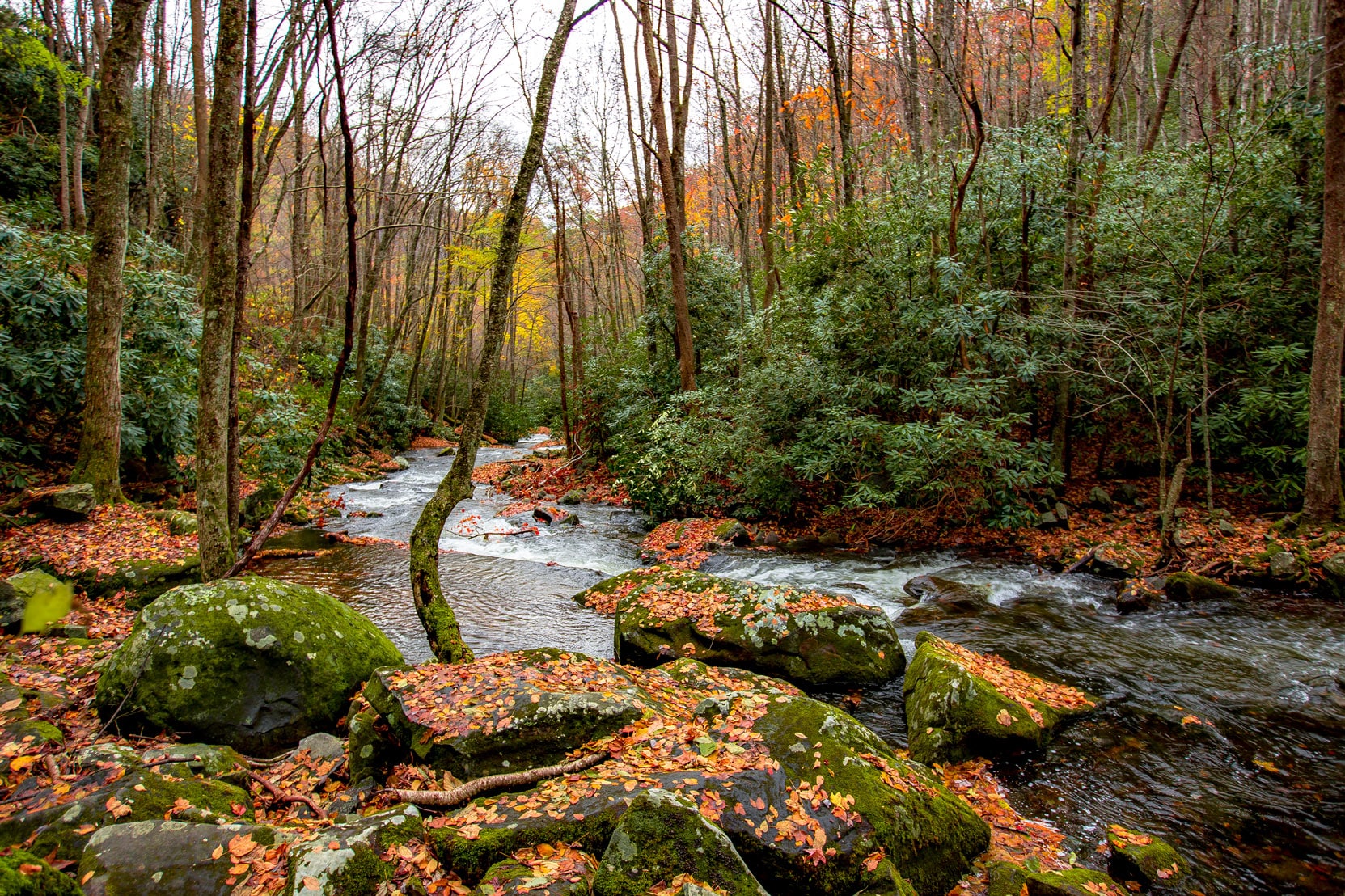
Knowing when to visit Great Smoky Mountains National Park is critical to making the most out of your trip to this beautiful eastern US national park. Each season brings it’s own unique opportunities and potential challenges.
Best Time to Visit Great Smoky Mountains National Park
The best time of year to visit Great Smoky Mountains National Park is October when the park displays it’s world-class fall foliage. The very busy summer season is over and much of the park tends to breath a sigh of relief giving way to quiet autumn scenery and plenty of wildlife sighting opportunities.
Great Smoky Mountains National Park Seasons
Spring in Great Smoky Mountains National Park

Spring in the Great Smoky Mountains can be unpredictable, with warm temperatures changing suddenly to cold and rainstorms arriving with little warning. Late spring yields warmer temperatures and milder weather with lots of beautiful flowering plants throughout the lower elevations of the park.
Summer in Great Smoky Mountains National Park
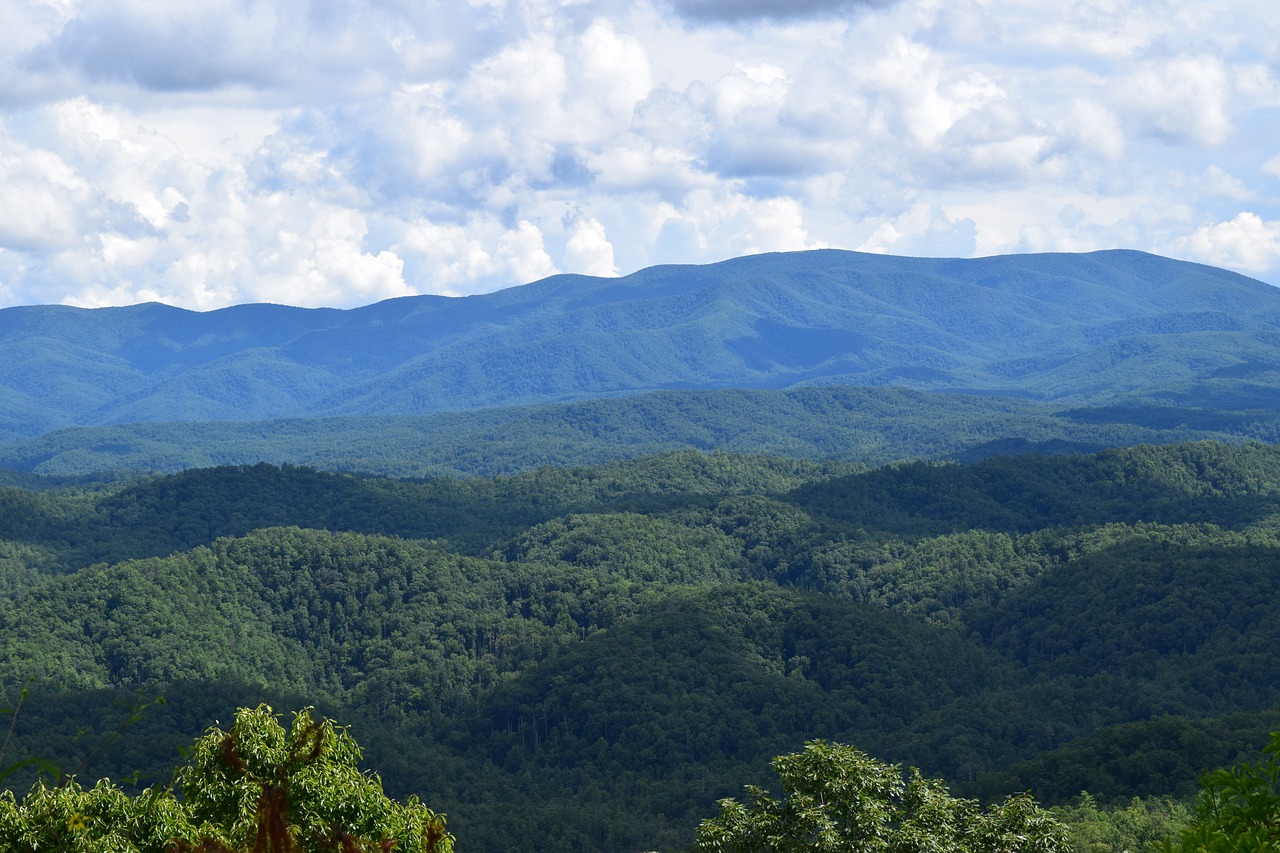
Summer in the Smokies brings heat and humidity throughout the park. Summer crowds fill the popular destinations and main roads and campsites and lodging can be difficult to come by. Mosquitoes and other insects are active and can be pesky in different areas of the park. Nights are pleasant and the higher elevations of the park yield better conditions throughout the day.
Note: Crowding in Great Smoky Mountains National Park in the summer has become a serious issue lately. While not quite rising to the levels of Yosemite or Zion, expect long lines and full parking lots if visiting the park during this time of the year.
Fall in Great Smoky Mountains National Park
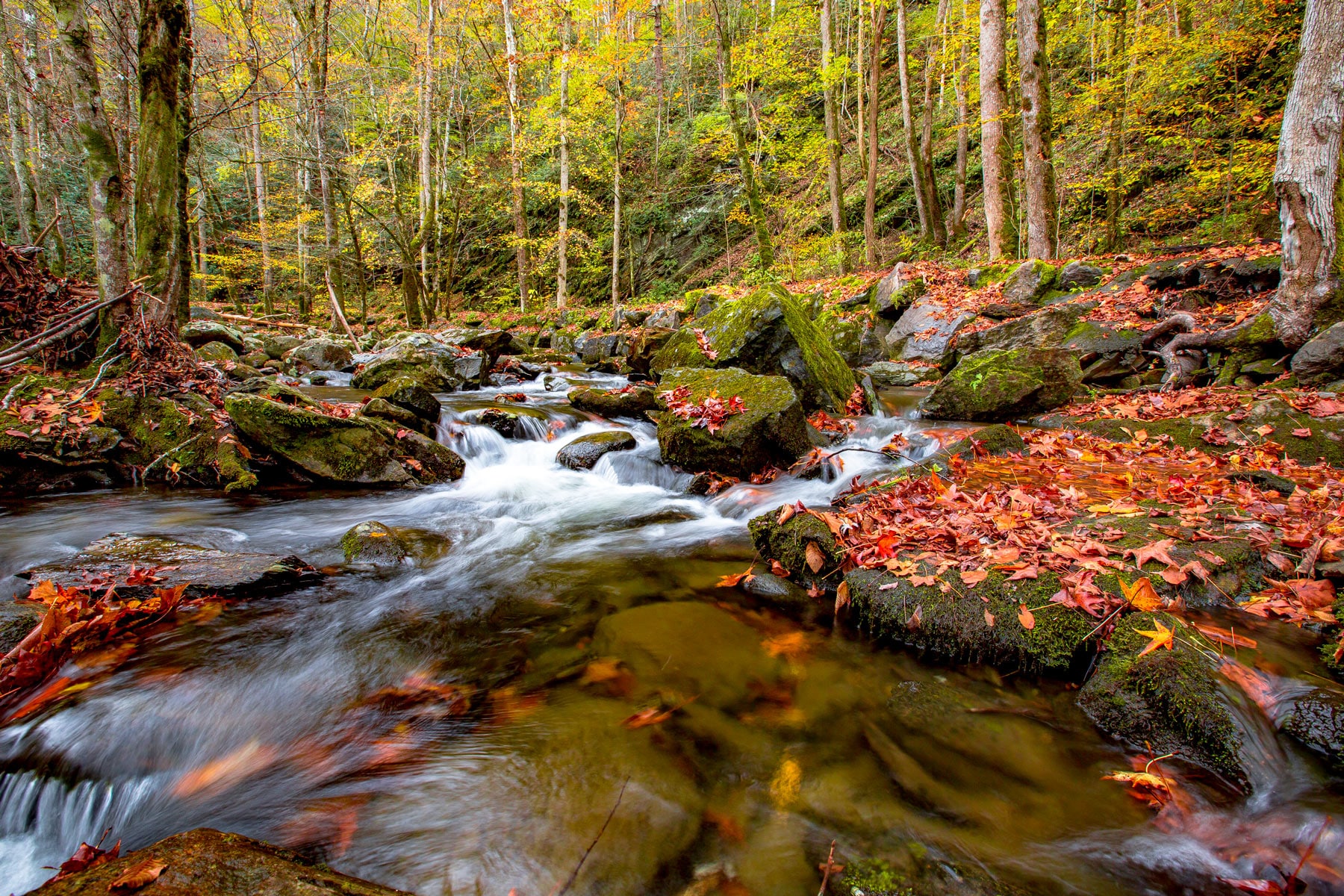
Fall is without a doubt the best time to visit Great Smoky Mountains National Park. Autumn brings crisp and cool weather and some of the most spectacular fall foliage found anywhere on the planet. Elk can be seen rutting in the valleys and the hot humid days of summer are replaced with brisk mornings and pleasant afternoons.
Nights can be cold in late fall and the park does see lots of visitors, or leaf peepers, from the surrounding areas. The fall color arrives in stages with the higher elevations reaching peak in mid October and the lower elevations reaching peak some years in early November.
Winter in Great Smoky Mountains National Park
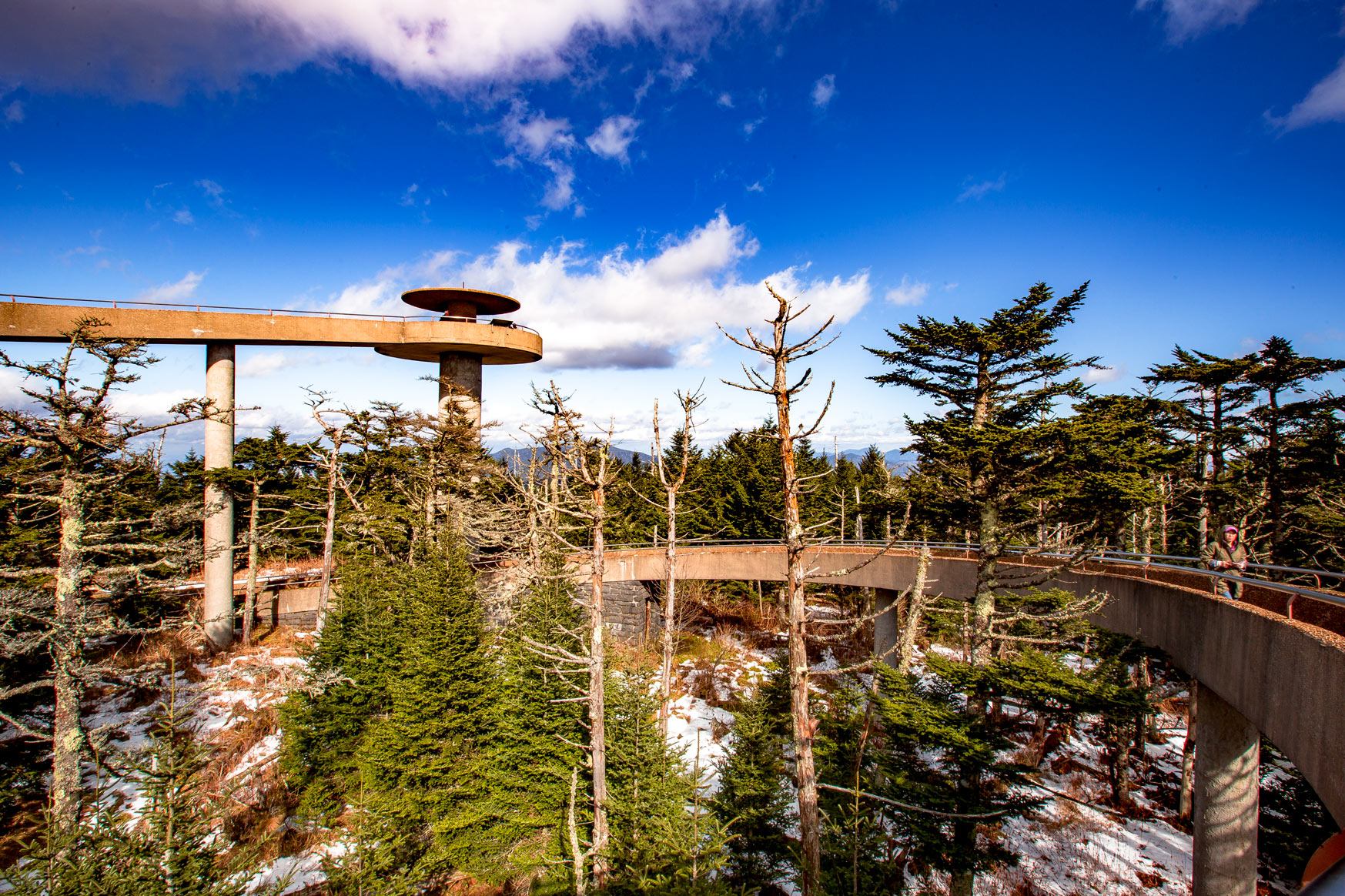
Winter brings some snow in the higher elevations of the park while the lower elevations can be much more mild and moderate. Temperatures range from the low 30’s to the low 50’s with occasional spells of colder weather. The park sees far less visitation in the winter months (keeping in mind it’s still the country’s most-visited national park) and remains very accessible.
Best Things to Do in Great Smoky Mountains National Park
1. Go Leaf Peeping

Fall in the Great Smoky Mountains is simply spectacular with burning red oaks and brilliant yellow and orange maples. The park is home to many varieties of deciduous trees which turn fantastic colors in the fall. Overlooks and creeks are ablaze with the colorful greetings of autumn and everywhere is a great spot to see this once-a-year feast for the eyes.
2. Take in the View from Clingmans Dome

The observation tower at Clingmans Dome provides sweeping views of the entire park and the surrounding mountains and lakes. On clear days you can see over 100 miles in any direction. This highest peak in the park is easy to access for visitors of all ages and abilities and a must for any visit.
3. Tour the Historic Cabins and Mills
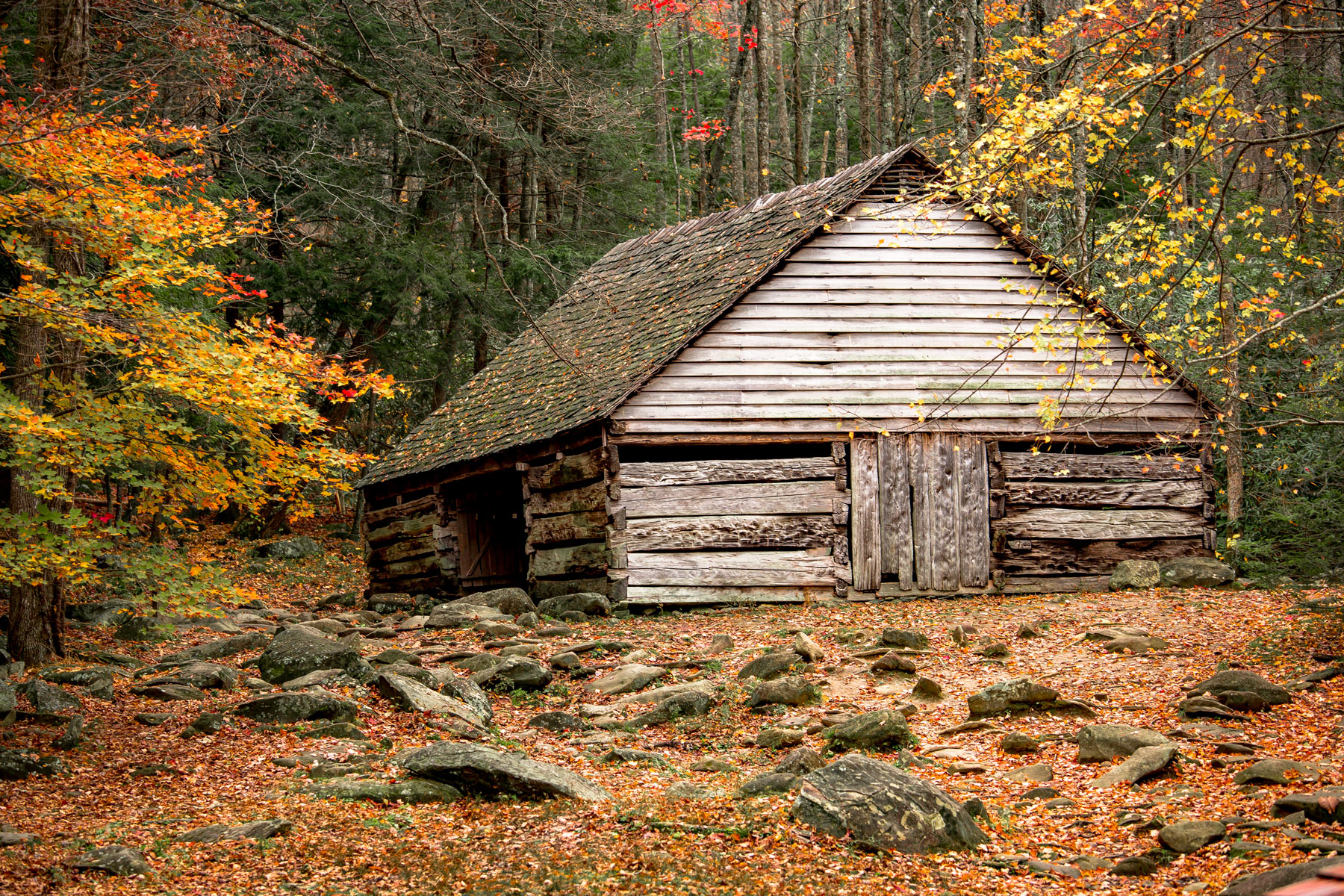
The historic cabins and buildings that dot the park are part of what makes Great Smoky Mountains National Park so great if you’ll excuse the pun. Seriously though, these beautiful rustic pioneer structures hearken back to the hard scrabble life forged by early settlers of the area and add to the beauty of the park.
There’s lots of great information on these historic structures in the park visitor centers and many are staffed by volunteers and interpreters who can tell you all about what life like for the people who built these frontier settlements.
4. Ditch the Tourists and Head for Cataloochee
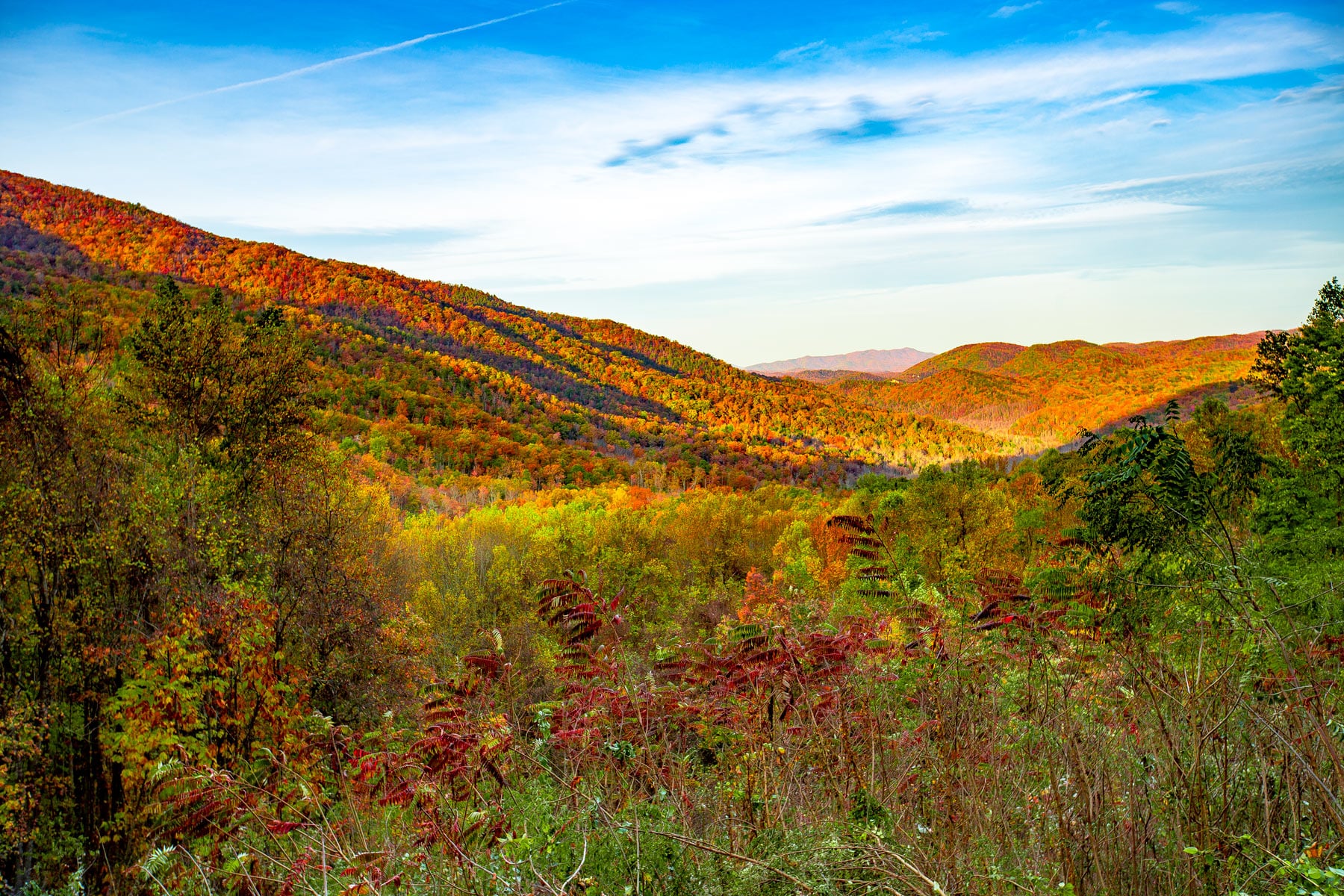
Far from the hustle and bustle of Gatlinburg and the tourists you’ll find this peaceful mountain valley. Known as Cataloochee, the valley was formerly home to a small mountain community before the park was established. Now you can explore the remaining historic homes and buildings and take in the peaceful mountain charm that once made this an ideal place to settle.
There is also a herd of elk that can be commonly seen grazing the pastures of this peaceful valley, some of the bull elk can grow to immense sizes with very large antler racks. You can also spot wild turkeys and a number of other interesting wildlife in this scenic and quiet part of the park.
5. Watch the Elk Rut
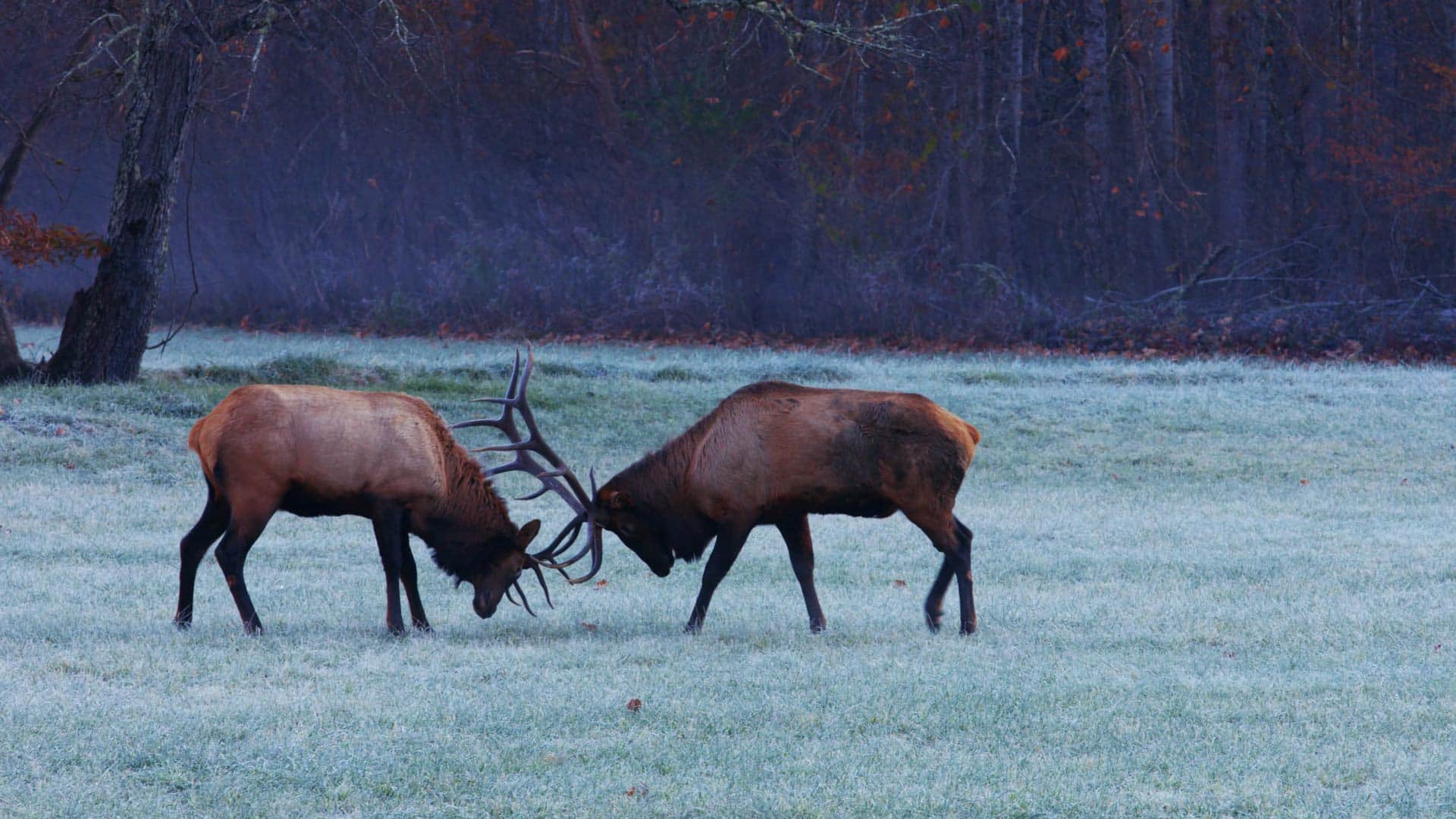
Elk once roamed the southern Appalachian Mountains and the eastern U.S. for centuries. Overhunting and habitat loss drove them to extinction in most of the eastern U.S. Fortunately elk were successfully reintroduced to the Great Smoky Mountains in 2001 and now thrive in their native habitat. In the fall you can watch them rut as the males clash and compete for dominance of the herd.
Where to Stay – Camping & Lodging
Great Smoky Mountains National Park has a whopping ten campgrounds, each offering a different type of camping experience. On top of this the park also offers backcountry camping for those looking for a more primitive and quiet experience.

Great Smoky Mountains Campgrounds
Great Smoky Mountains National Park has ten campgrounds, each offering a different type of camping experience.
Abrams Creek Campground is one of the more remote campgrounds in the park and offers a peaceful and quiet setting along a creek. The campground has flush toilets and running water and offers opportunities for hiking and fishing. Reservations are required.
Balsam Mountain Campground is located in one of the more remote areas of the park and offers a peaceful and quiet setting nestled amidst the mountains. Elk are often seen in the area in the spring and fall. There are 42 campsites and the campground offers flush toilets and running water. Reservations are required.
Big Creek Campground is one of the more remote campgrounds in the park and offers a beautiful setting along the rolling waters of Big Creek. Visitors may spot black bears in the area and river otters along the creek. The campground has flush toilets and drinking water, no generators or recreational vehicles are allowed. Reservations are required.
Cades Cove Campground is one of the most visited campgrounds in the park and is located in possibly the busiest part of the park where some 2 million visitors come to explore the historic structures and take in the wildlife and beauty of the Smokies along the 11-mile scenic loop drive. Nearly all of the park’s iconic wildlife can be seen in this area which is part of the reason it’s so popular. The campground is open year round.
Cataloochee Campground is nestled in the historic Cataloochee Valley, a more remote section of the park. Here you’ll find plenty of recreational opportunities without the crowds often found in other areas of the park. In the spring and fall you’ll also see elk grazing in the valley. The campground provides flush toilets and drinking water. Reservations are required.
Cosby Campground is a secluded campground nestled in the forest of the Smokies. This campground offers plenty of sites and a more primitive camping experience.
Deep Creek Campground is a traditional campground located on the popular Deep Creek. Here you’ll find plenty of fishing and recreation opportunities to go along with the convenience of flush toilets and running water. There are 92 campsites here and reservations are required.
Elkmont Campground is the most heavily used campground in the park and also the largest. The campground is located conveniently near Gatlinburg, TN and provides all the amenities needed for a great camping experience. the sites are wooded and some are situated along Little River, offering a tranquil spot to put down a tent. Reservations are recommended.
Smokemont Campground is one of the most scenic campgrounds in the park with beautiful wildflowers in the spring and spectacular fall color in autumn. There are 142 sites here and the campground is open year round.
Lodging in the Great Smoky Mountains
Great Smoky Mountains National Park is a sprawling park stretching over two states. The area is home to the major tourist hubs of Gatlinburg and Pigeon Forge, each offering numerous upscale lodging options.
Bryson City and Cherokee offer plenty of lodging options on the south end of the park. We’ve listed the most popular ones below. For tent options see our camping section above.
Lodging options around the park include:
- Courtyard by Marriott Gatlinburg Downtown (Gatlinburg)
- The Park Vista DoubleTree by Hilton (Gatlinburg)
- Hampton Inn Gatlinburg Historic Nature Trail (Gatlinburg)
- Fairfield Inn & Suites by Marriott Gatlinburg (Gatlinburg)
- The Lodge at Buckberry Creek (Gatlinburg)
- Margaritaville Resort Gatlinburg (Gatlinburg)
- Hilton Garden Inn Gatlinburg Downtown (Gatlinburg)
- Fairfield Inn & Suites by Marriott Cherokee (Cherokee)
- Holiday Inn Club Vacations Smoky Mountain Resort (Gatlinburg)
Restaurants in the Great Smoky Mountains
The nearby town of Gatlinburg is a major tourist hub in the region and offers plenty of dining options. The other park-adjacent towns of Cherokee and Bryson City also have options.
You’ll also find lots of Black Bear themed dining as it’s more or less the unofficial symbol or mascot of the area. We’ve linked the most popular spots below:
- Local Goat (Pigeon Forge)
- Crockett’s 1875 Breakfast Camp (Gatlinburg)
- Old Mill Restaturant (Pigeon Forge)
- Cherokee Grill (Gatlinburg)
- Wize Guyz Grille (Cherokee)
- Brio Italian Grille (Cherokee)
- The High Test Deli & Sweet Shop (Bryson City)
- The Bistro at the Everett Hotel (Bryson City)
My Favorite Spot in Great Smoky Mountains National Park
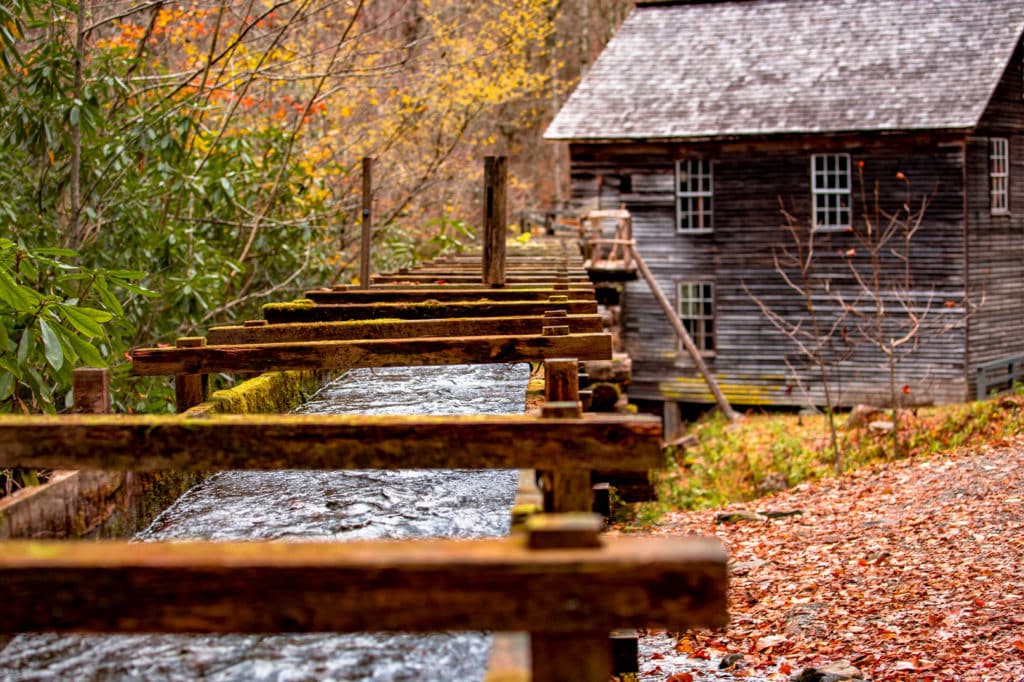
This 1880’s grist mill is more than just a dusty relic of the past. It’s a living and working testament to the way of life of a people who toiled in these mountains so long ago. Perhaps outmatching its historical and cultural value is its scenic value.
In the fall the old mill, with its weather-worn wooden frame and still flowing millrace, looks like something out of a Robert Frost poem.
The vivid autumn leaves provide the perfect backdrop to this quiet rustic wonder. Visiting the Mingus Mill on a cold fall morning you’re likely to find you have the place to yourself. It’s on mornings like these that the old mill really shines.
You can walk the exterior and listen to the gentle sound of water lapping up up against the worn wooden frames of the millrace, hear the rustle of the leaves in the trees and their satisfying crunch under your feet, and listen for the nearby calls of songbirds in the canopy above you.
There are few places I’d rather be on a chilly fall morning.
Photo Gallery – Great Smoky Mountains National Park
Photos from the production of our Great Smoky Mountains Film.
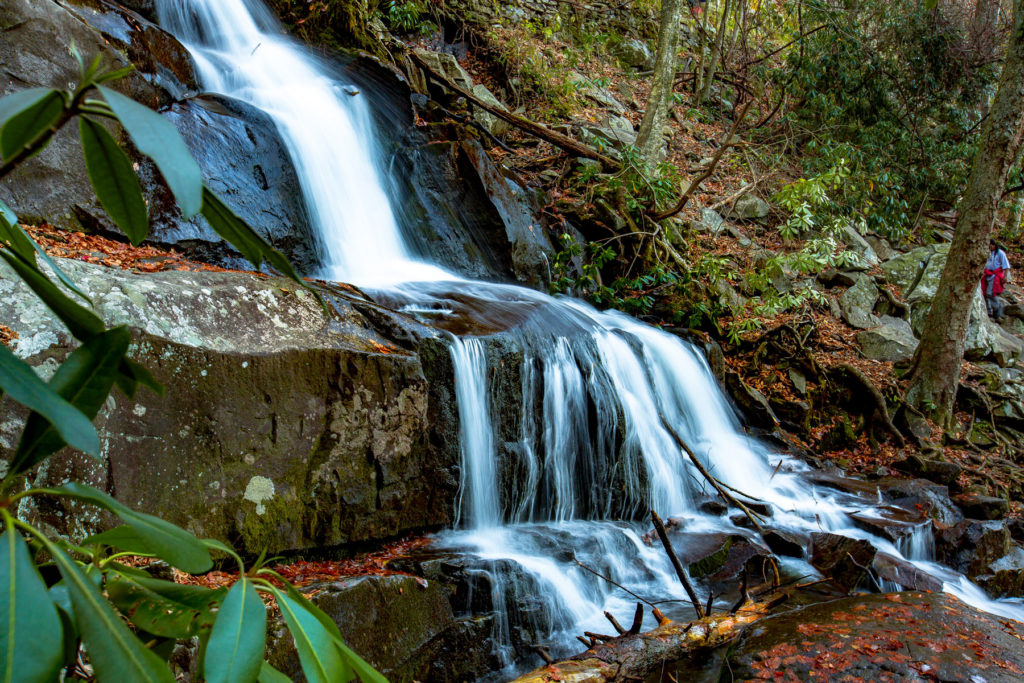
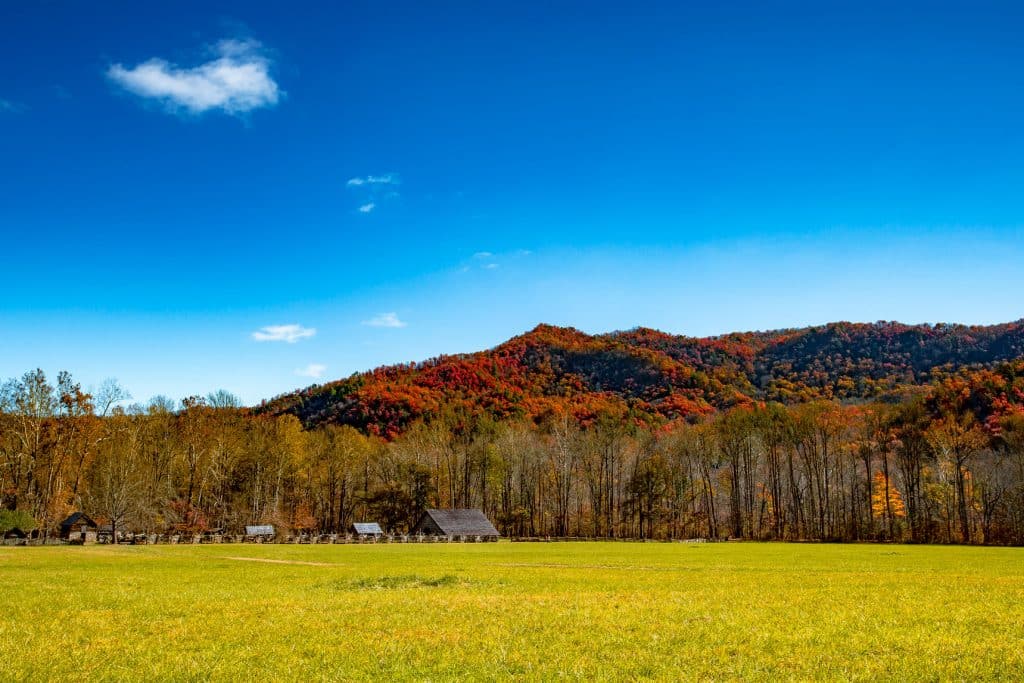

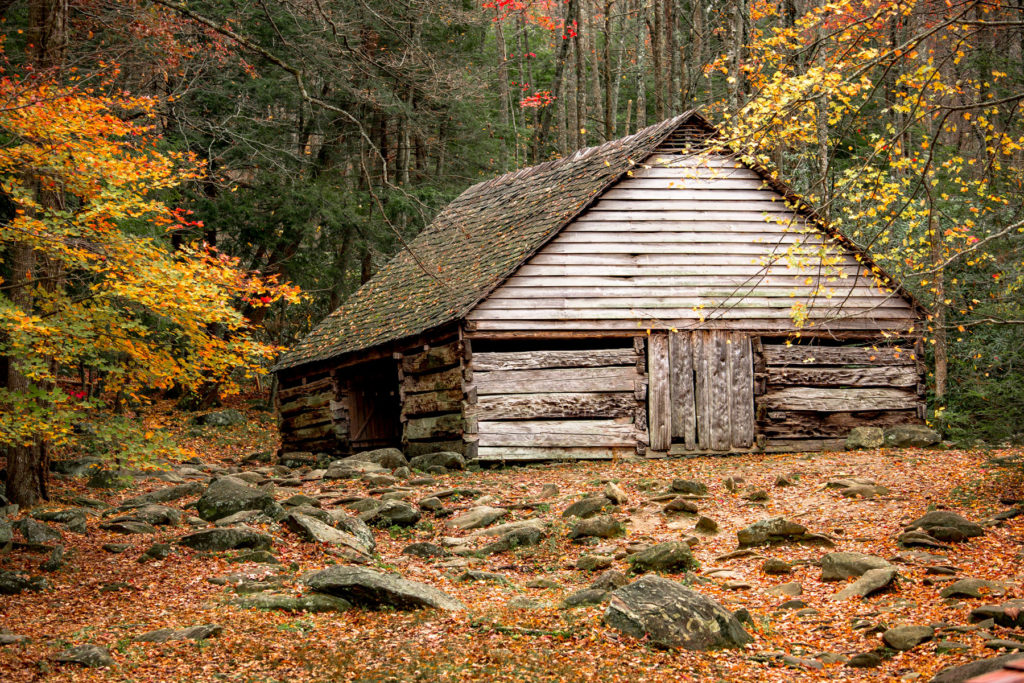
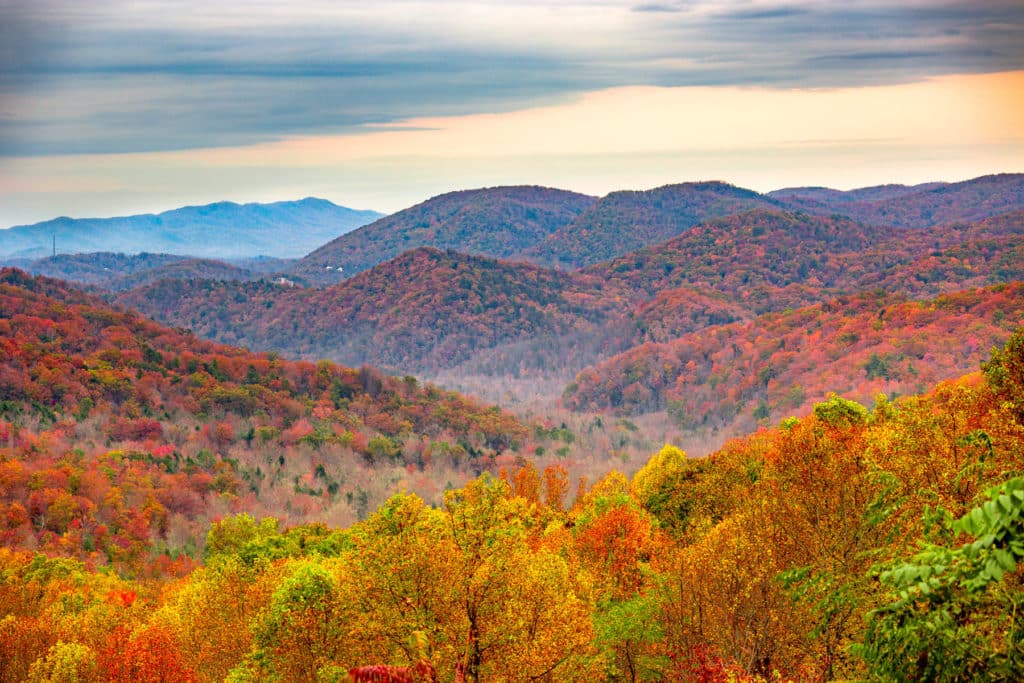
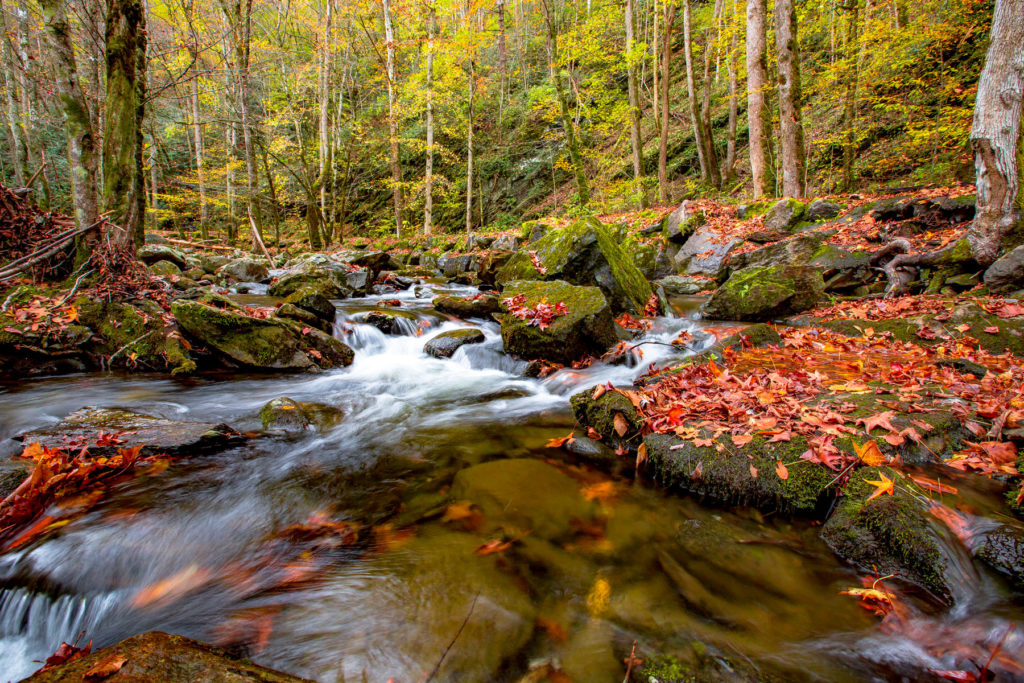
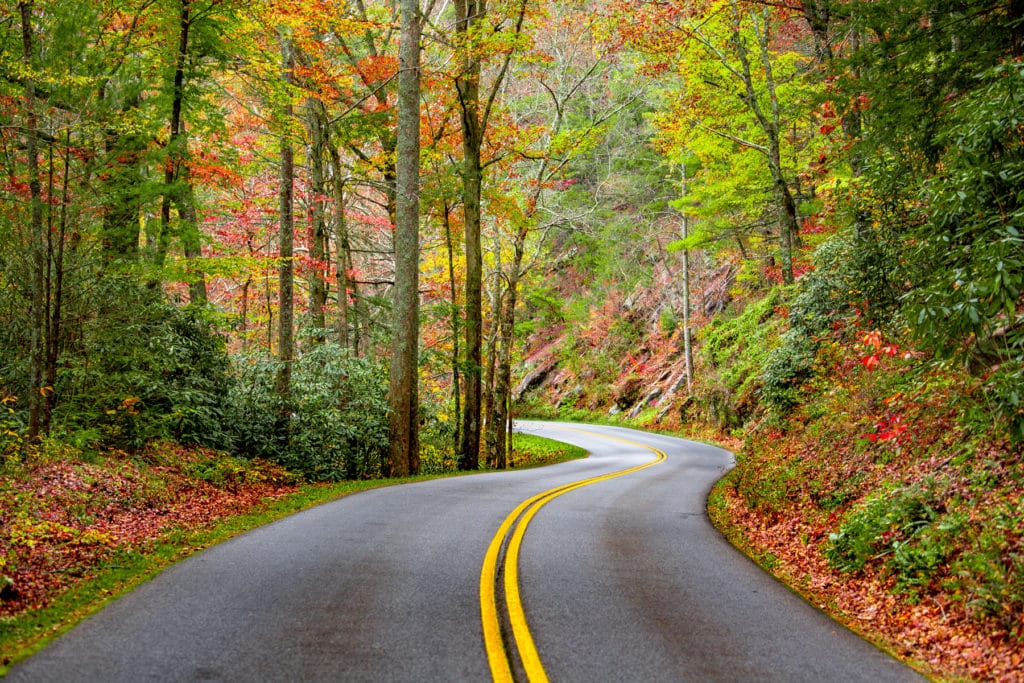
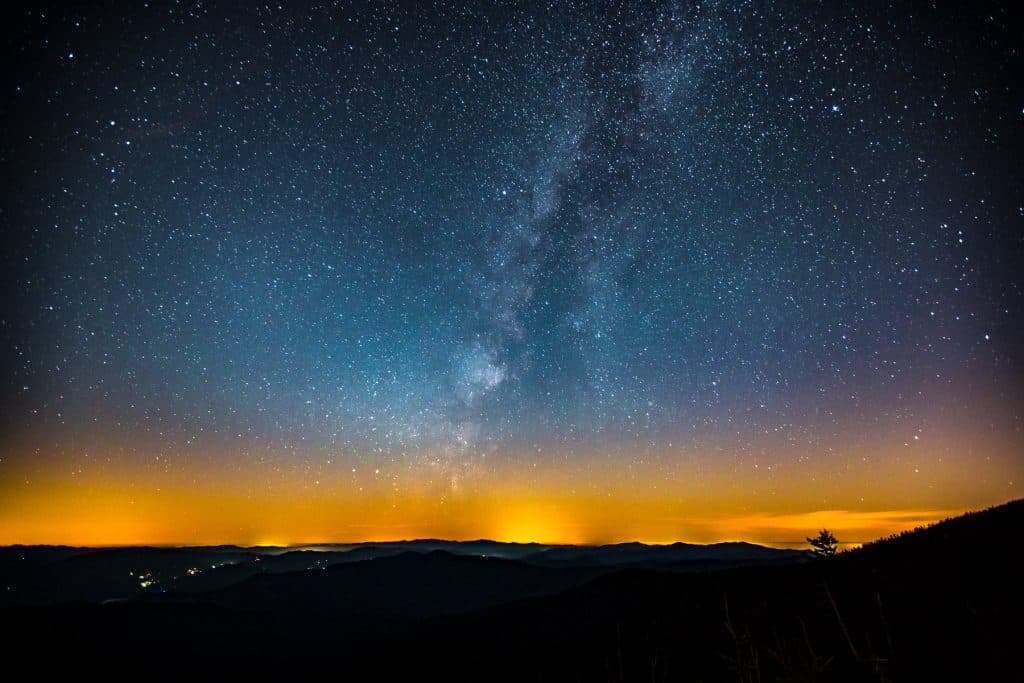
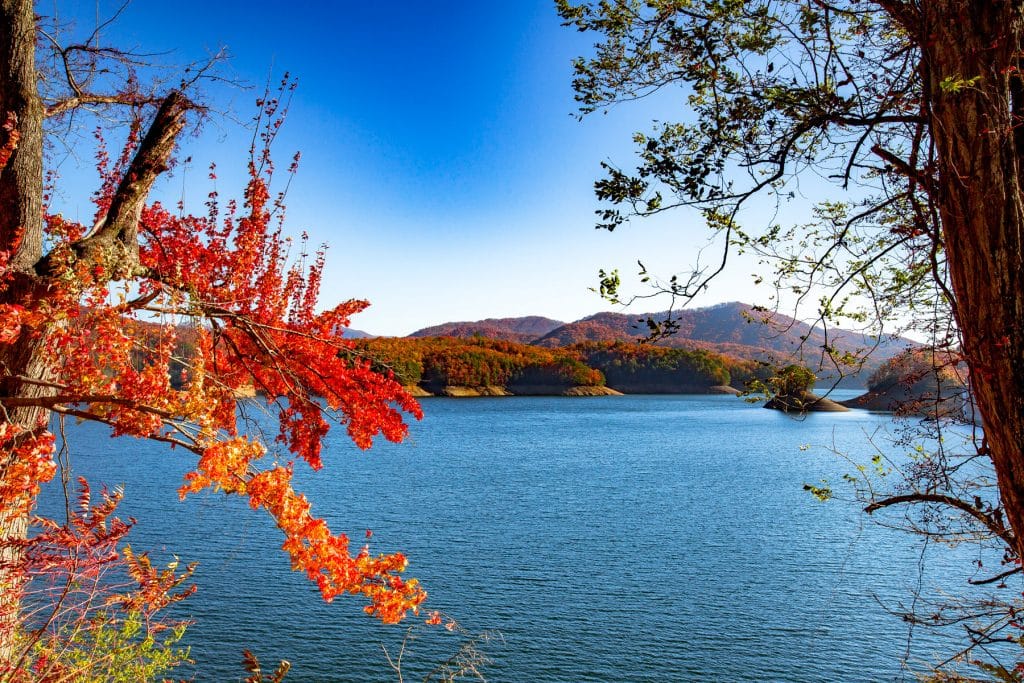

Nearby Attractions
- Cherokee National Forest
- Nantahala National Forest
- Pisgah National Forest
- Blue Ridge Parkway
Summary | Leave Us a Comment!
That’s a wrap! Hopefully you feel like you’ve gleaned everything you need to know for your next trip to Great Smoky Mountains National Park. Feel free to leave a comment below and let me know if you have any questions or thoughts!
Hope to see you on the trails sometime soon!
Latest Posts from More Than Just Parks
- 25 AMAZING Things to Do in Capitol Reef National Park (+ Video)As one of Utah’s most beautiful & least visited parks, there are a host of incredible things to do at Capitol Reef National Park.
- COMPLETE National Parks List 2024 (Printable MAP + By State)A list of all 63 national parks by state in alphabetical order, a free printable national park map, national parks checklist, & more.
- 25 AMAZING Things to Do in Death Valley National Park (+ Photos)Death Valley is a truly otherworldly place with insane vistas, extreme weather, breathtaking beauty, and all sorts of amazing things to do.
- 8 EPIC Kansas National Parks (in Photos + Helpful Tips) 2023Historic forts, historic explorers, beautiful prairies, the fastest mail service in the Old West, and so much more await you in Kansas!
- 10 AMAZING Facts About Carlsbad Caverns National ParkWe’ve compiled some fascinating Carlsbad Caverns National Park Facts that will enhance the way you interact with this special place!
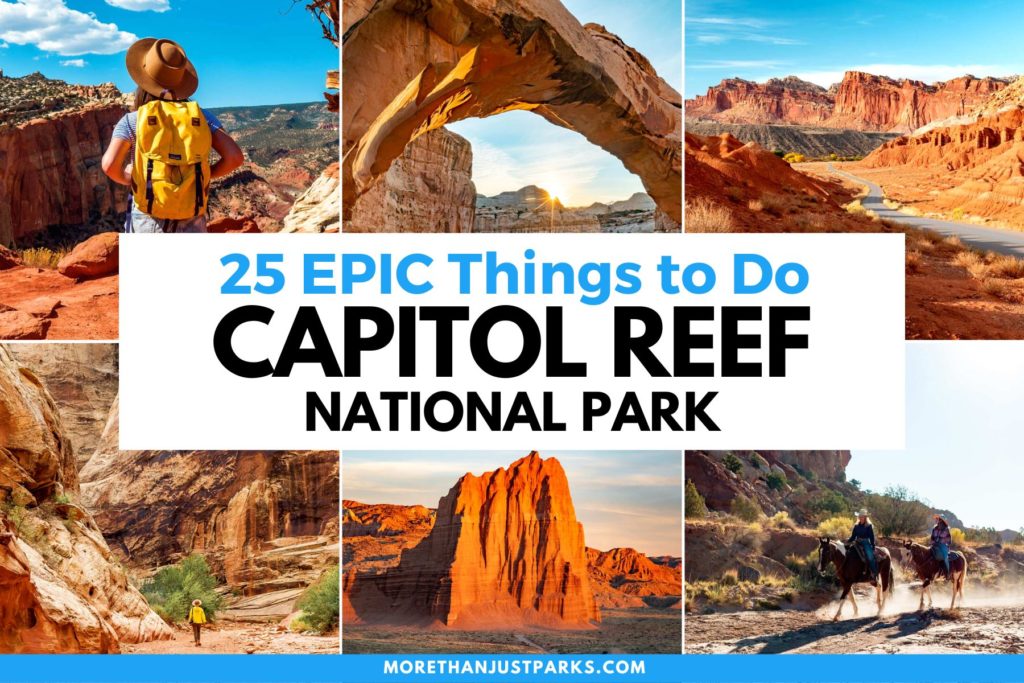
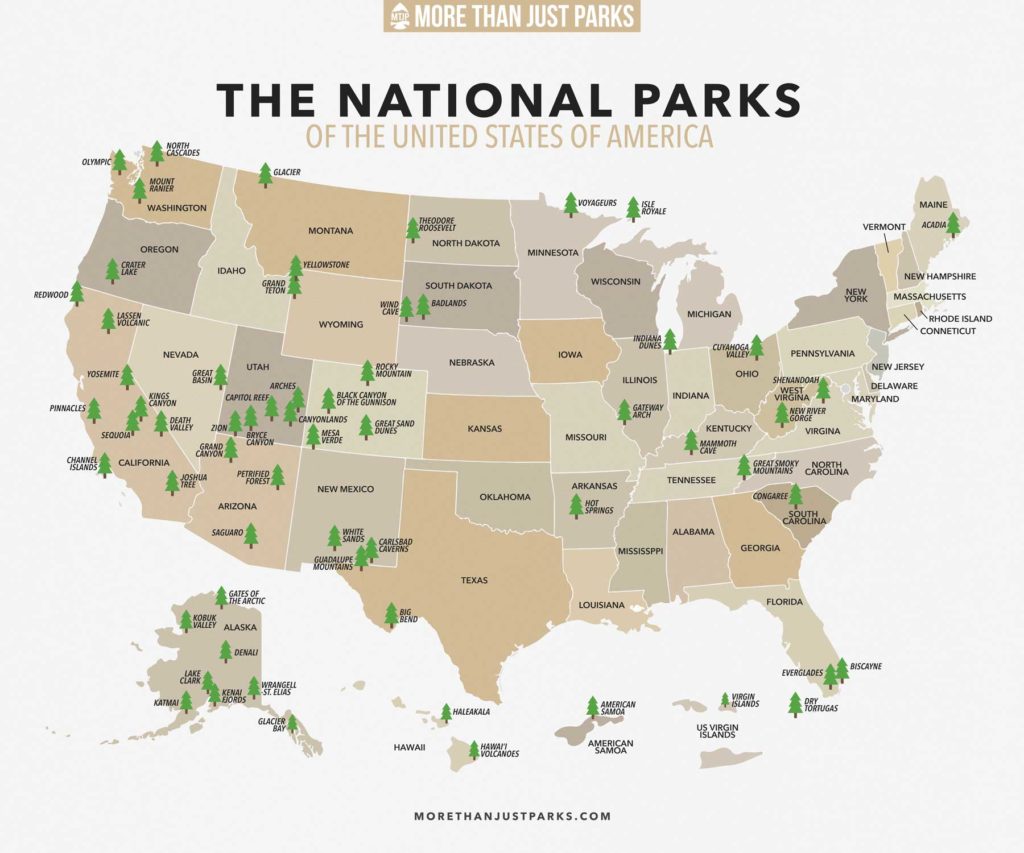
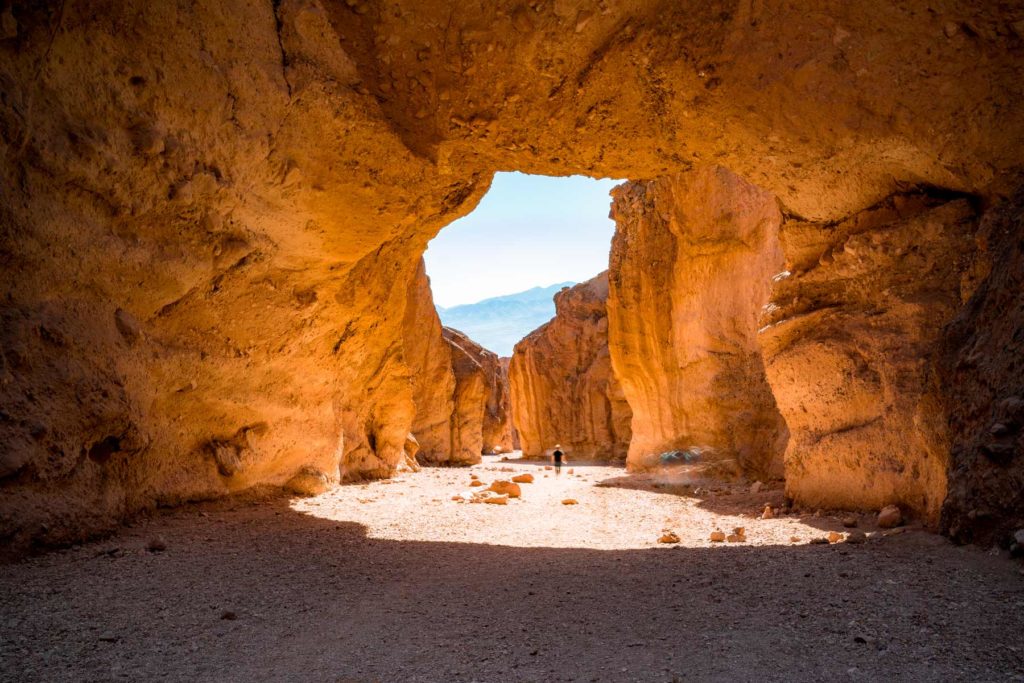
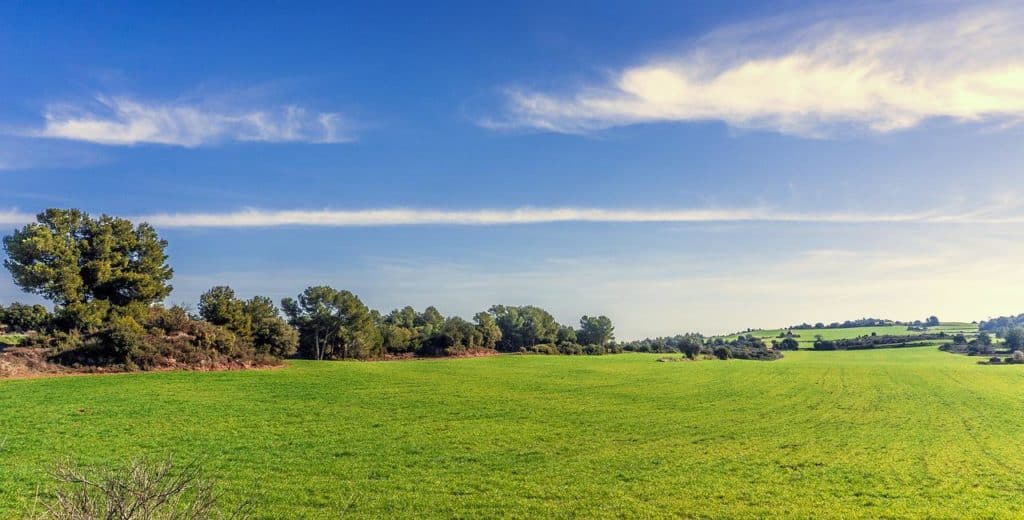
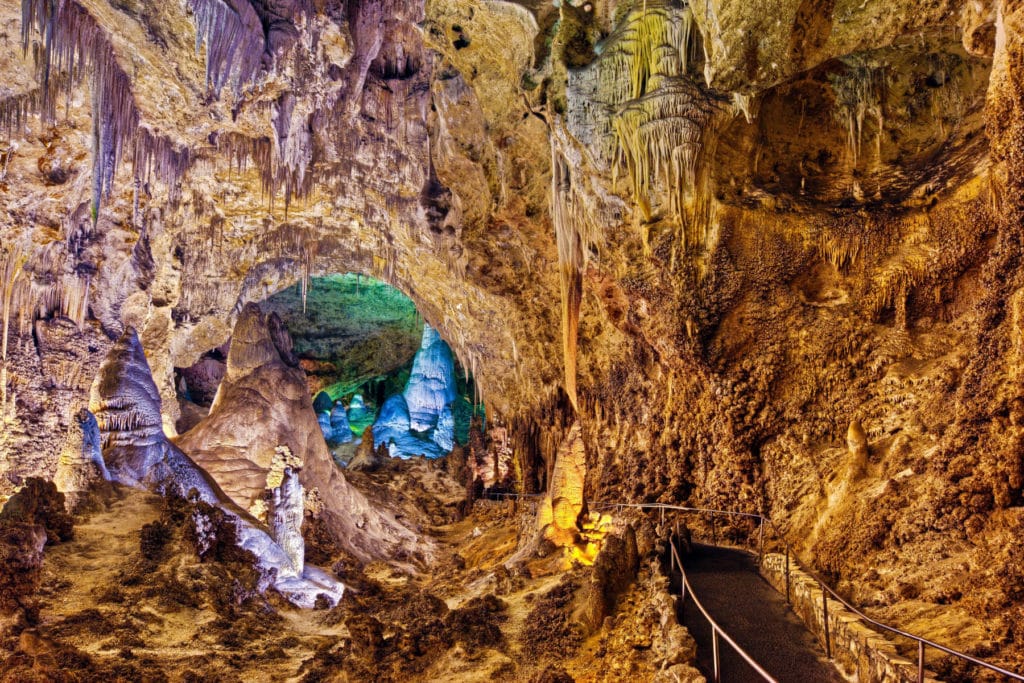

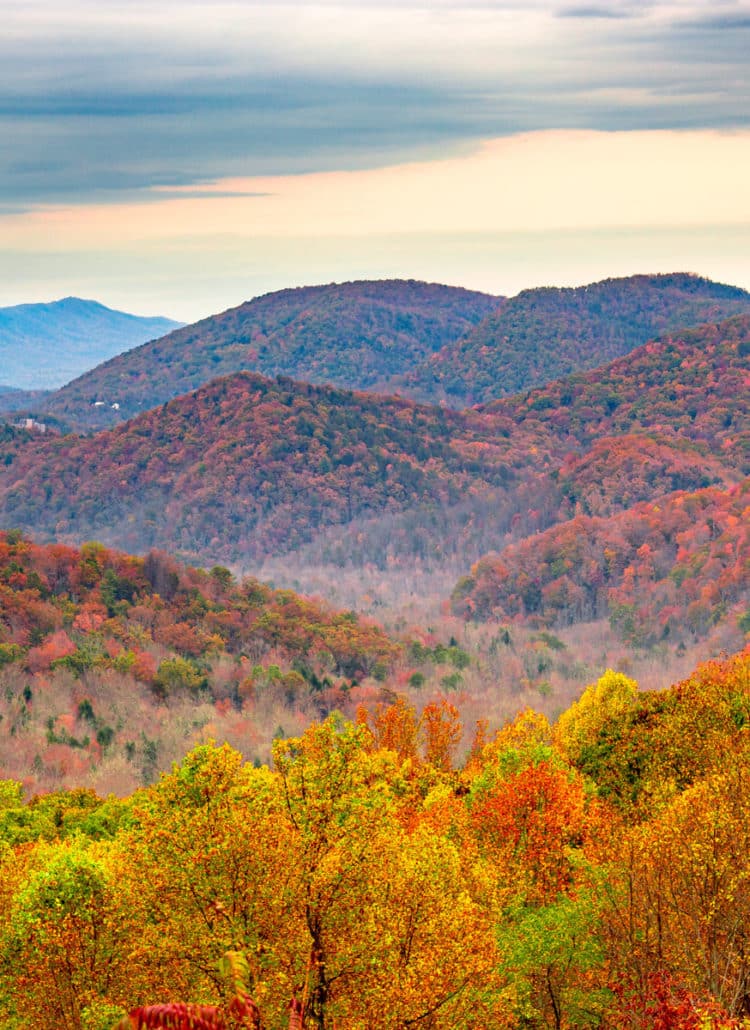
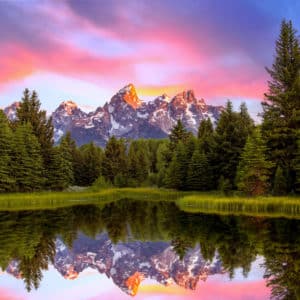

Regarding fees, starting just this month (March 2023) a fee is now required for parking. It’s $5 daily, $15 weekly, or $40 annually.
Grazing online, I just discovered your site– a welcome tool for promoting appreciation of our Parks. I’m a NPS volunteer at the Mingus Mill, so kudos for naming it your “favorite place”– mine too!
Your narrative of GSMNP history perhaps leans too heavily on the notion of a “pristine landscape” at the time the Park was coming into existence. First, white settlement in the Smokies, beginning ca. 1800, saw significant clearing of fields, cutting of trees for building, etc. In the 1920s and ’30s, the park’s creation displaced an estimated 5,000 to 6,000 people, under eminent domain– families were paid for their property and had to move. It was actually the highest level of human displacement of any national park, rivaled only by Shenandoah.
So, today’s smattering of rustic, historic structures only hint at what was once here in terms of human culture (my bias, obviously!). Secondly, one could get the impression that industrial-scale logging never came here, but it certainly did. Northern-based timber companies bought vast tracts of Smokies land (the great majority of Great Smokies acreage, in fact) after the turn of the 20th century, establishing half a dozen sprawling sawmill sites and networks of rail lines up into the hinterlands and out to markets.
Thankfully, all this was relatively short-lived (though still frightfully destructive), brought to an end largely by Congress’ action in 1926. Finally, you might mention the role of the CCC (1933-42) in restoring the land and building the Park’s original infrastructure — trails, bridges, campgrounds, etc. – much of it still in use today. (Some of the large sawmill sites, like Smokemont, were transformed into campgrounds by the CCC.)
A reference work you may find of interest is: “A Gift for All Time: GSMNP Administrative History” (2008, 394p). It’s downloadable free online.
Thanks again for a very useful web-site.
See you at the mill! All the best…
Did you hear the elk calling when you were in Cataloochee? (Or glunking, if you want to know the actual term). When we heard them call we didn’t know what it was at first, but the noise is so magical and I was just wondering if you got lucky enough to hear it. They call the most in the fall during mating season.
Could you add a small part about some of the individuals behind the Smokies? I liked how you included the Rockefellers and the best way to find out about the Smokies in my opinion is by watching the National Parks documentary by Ken Burns because it taught me so much more than I already knew. Horace Kephart and George Masa are 2 people who I’d be sure to include something about because they played such a big part in getting people aware of all the logging in Appalachia.
Maybe include Steven Mathers and Horace Albright?
David
beautiful place, thank you for creating this article